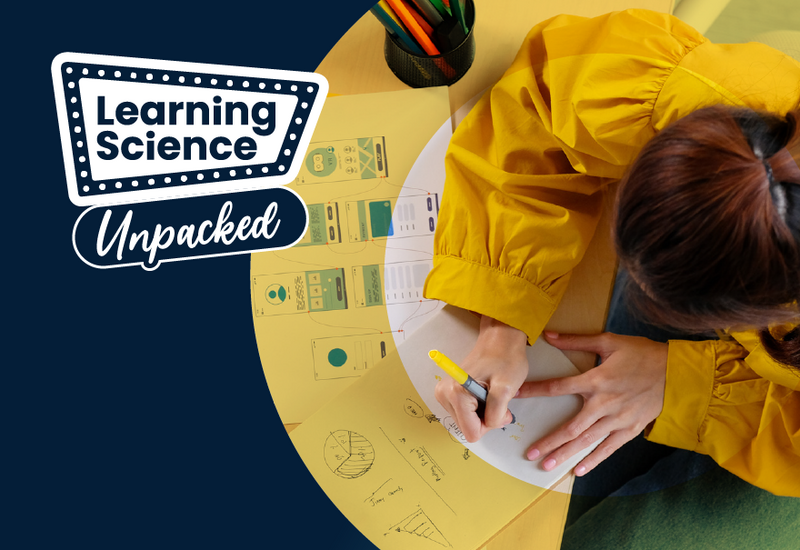Welchen Einfluss hat die visuelle Gestaltung auf die Effektivität des Lernens? (engl.)

This blog is inspired by the third episode of our Learning Science Unpacked podcast, with neuroscientist and Sponge partner, Professor Paul Howard-Jones.
Visuals are an essential component in successful learning programmes. They help direct people’s attention, support learning messages, and enhance knowledge application if represented in an abstract form. But we must also exercise caution and not get carried away with distracting aesthetics that overload working memory.
Images affect attention
Visuals will affect our attention at an automatic subconscious level, over which we have very little control. For example, how visuals are laid out on a web page will direct attention as we automatically start processing colour, text, density, and familiarity. All of this will influence our attention – and attention is the gateway to learning.
Linking images and text is effective
Once people are paying attention, that’s when the learning begins as they start looking at text or reading information to find the meaning. The most effective thing is to support making links between the visuals and the text, by asking questions or encouraging people to interpret connections.
Symbolic imagery can be more effective than photographs
Keep in mind that extraneous visual information overloads working memory. Abstract symbolic images can be more helpful than a photo because photos may include extraneous information or introduce cultural biases that audience members may find off-putting.
Minimise distraction
Visuals add a lot when it comes to representing things in a novel way and simplifying messages. But very rich environments can be distracting if the information is not contributing to the learning. Avoid bells and whistles. Whilst, initially, a rich visual environment could be useful to draw people in, consider that some of the things we may enjoy doing are not always the most effective ways of teaching the message.
Images elicit emotion – vital for memory
When we see imagery, emotions are aroused. This causes engagement in the brain as the reward system activates and produces an approach motivation (assuming we like what we see!) This attracts us towards a learning experience.
It also makes it more memorable. Why? In the brain, the hippocampus, which is important for laying down the memory, and the amygdala, considered to be the emotion centre, are right next to each other. This enables ‘emotional tagging’ of information, making it more memorable.
Animation – how can audio and visuals together positively impact learning effectiveness?
Encouraging the formation of links between different representations of images and audio is what makes animations effective. Here are some other tips for animation and learning.
We learn from watching (even non-human!) avatars
When it comes to human movement, we have a mirror neuron system. This extraordinary feature of our brains generates the same neural activity when we watch somebody doing something as it does if we are doing it ourselves. This is a way of preparing ourselves to imitate the task being shown.
Incredibly, there are also networks that activate to understand why someone is doing that task – helping us to understand the purpose and aims of the action. It’s been demonstrated that if you are trying to understand a process, seeing an animation can be helpful if it involves biological motion. Watching a character moving a piece of machinery for example, can be very effective and ensures we minimise extraneous information.
Passive observation requires follow up
If learners are passively observing, it needs to be followed up to ensure practice and consolidation. Traditional approaches like asking questions are an effective way to support processing.
Text and audio at once inhibit learning
If people are looking at text on the page (a visual component) and hearing someone talking or reading out that text at the same time, research shows this is detrimental to learning.
This is because what we’re hearing and reading are both activating our speech circuit. People have only one speech circuit, so having text to read and audio to listen to will be akin to two people talking almost at the same time: impossible to learn from. If text and audio are ever included together, sometimes required for accessibility reasons, it is important to give users the control to switch off the audio if they choose.
For almost 20 years, Sponge has led the industry in award-winning design, animation, and captivating visual experiences for learning and workforce development. Our catalogue of awards speaks for itself.
Find out how Sponge can help you shift the dial on learner engagement through market-leading design, and track this through to its impact on your wider organisational goals. Get in touch with our team of learning experts today.
Speak to our experts about your digital learning programmes today.